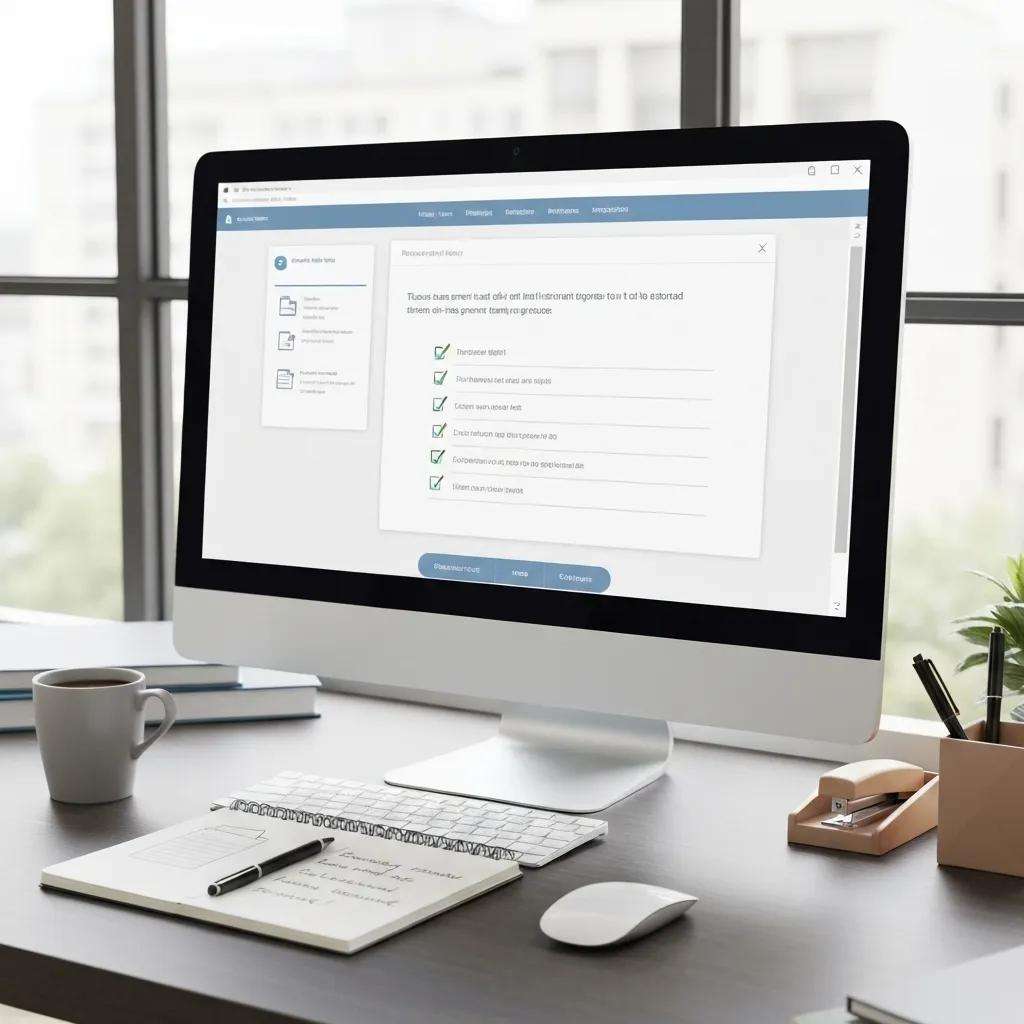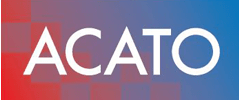ISO 9001 Document Requirements: A Clear Overview

Mastering ISO 9001 Document Requirements: Your Comprehensive Guide to Documented Information and Compliance
Effectively managing documented information is fundamental to a robust Quality Management System (QMS). Without it, audit readiness, operational consistency, and regulatory trust can falter. This guide will demystify the ISO 9001 document requirements, covering Clause 7.5 obligations, essential documents and records, and best practices for identification, approval, distribution, retention, and security. You’ll learn about the structure of QMS documentation, how to integrate IT security measures, strategies for overcoming common challenges, legal retention criteria, and the tools—templates, checklists, and software—that simplify compliance. Each section offers actionable steps, EAV-formatted tables, and real-world examples to provide decision-makers in SMBs, enterprises, government bodies, and law firms with the expert insights needed for strong document control and successful certification.
What Exactly Are the ISO 9001 Document Requirements?
ISO 9001 document requirements refer to the documented information that organisations must establish, update, and protect to meet the standard’s Clause 7.5 obligations. This ensures traceability, consistency, and provides crucial audit evidence. By mandating documented information for policies, objectives, and operational controls, ISO 9001 promotes transparent processes and continuous improvement. For instance, a documented quality policy aligns every department with strategic objectives. As defined in the official ISO 9001:2015 standard, Clause 7.5 replaces the terms “documents and records” with “documented information,” offering organisations flexibility in format while maintaining rigorous control.
What Constitutes Documented Information in ISO 9001:2015?
Documented information is a term introduced in ISO 9001:2015, consolidating the concepts of “documents” and “records” to allow for greater flexibility in format and control. This unified approach permits organisations to utilise electronic files, cloud repositories, or traditional paper records, provided each item is properly identified, reviewed, and authorised.
International Organization for Standardization, ISO 9001:2015 – Quality management systems – Requirements (2015)
Key aspects include:
- Creating and updating content to accurately reflect QMS requirements.
- Controlling access, distribution, and protection of the information.
- Retaining records as evidence of conformity and performance.
This adaptable definition ensures that all information supporting process consistency and audit trails is managed under a unified control framework.
Why is Document Control a Necessity Under ISO 9001?
ISO 9001 mandates document control to guarantee the availability, integrity, and protection of documented information throughout its entire lifecycle. Effective document control prevents unauthorised modifications, ensures personnel access to the most current procedures, and provides verifiable evidence during audits.
Quality Management System, Benefits of Document Control (2024)
Key benefits include:
- Enhanced traceability of changes and version history.
- Reduced risk of errors stemming from outdated instructions.
- Consistent communication of policies and procedures.
- Streamlined audit preparation through organised evidence.
Document control transforms documented information from static archives into dynamic assets that actively support continuous improvement.
What Are the Mandatory Documents and Records for ISO 9001 Certification?
Mandatory documents and records serve as evidence that the QMS is planned, implemented, and maintained in accordance with ISO 9001:2015. The table below outlines each requirement, its purpose, and the corresponding clause:
| Document | Purpose | ISO Clause |
|---|---|---|
| Scope of the QMS | Defines the boundaries and applicability of the QMS. | 4.3 |
| Quality Policy | Communicates management’s commitment to quality. | 5.2 |
| Quality Objectives | Sets measurable targets for improvement. | 6.2 |
| Competence Records | Provides evidence of personnel qualifications and training. | 7.2 |
| Calibration & Maintenance Records | Offers proof of equipment suitability and performance. | 7.1.5 |
| Nonconformity & Corrective Action Records | Demonstrates the handling of defects and issues. | 10.2 |
| Management Review Results | Shows top management’s evaluation of QMS progress. | 9.3 |
Each mandatory item ensures that critical elements of planning, monitoring, and review are clearly documented and readily accessible for audit verification.
How Do Documents and Records Differ Within ISO 9001?
Documents are maintained to define processes and requirements, while records are retained as evidence of achieved results. This distinction dictates how each item is managed:
| Type | Definition | Retention Action |
|---|---|---|
| Documents | Prescribed methods for performing activities (e.g., procedures). | Maintained and updated regularly. |
| Records | Evidence of conformity and performance (e.g., logs). | Retained for specified periods. |
Documents act as living guides subject to revision control, whereas records serve as static proof of actions taken, with each playing a distinct and vital role in a compliant QMS.
How Do You Implement ISO 9001 Document Control Procedures?

Document control procedures outline the systematic process for creating, reviewing, approving, distributing, and retiring documented information. Implementing these procedures ensures that every document or record follows a defined pathway from its inception to its disposal, fostering consistent process execution.
What Are the Essential Steps in Document Identification and Version Control?
- Assign unique identifiers and revision numbers to each document.
- Embed essential metadata, such as author, date, and version, in headers or footers.
- Store previous versions securely in an archive.
- Automate version tracking using dedicated document management software.
- Conduct regular audits of version histories to ensure completeness.
These measures guarantee traceability and prevent the circulation of obsolete documents, establishing a solid foundation for reliable QMS operation.
How Should Document Approval and Review Processes Be Managed?
Document approval and review processes are crucial for ensuring that only authorised content is released:
- Establish clear authorisation roles for document creation, review, and approval.
- Define review intervals (e.g., annually, biennially) based on the criticality of the document.
- Record review outcomes and any required updates in a dedicated review log.
- Involve cross-functional stakeholders to confirm the relevance and accuracy of the content.
Controlled review processes maintain content validity and demonstrate effective management oversight.
What Are the Best Practices for Document Distribution and Access Control?
Efficient distribution and access control ensure that authorised personnel have access to the correct information precisely when they need it:
- Utilise centralised repositories with role-based permission settings.
- Implement read/write restrictions based on specific job functions.
- Notify stakeholders of new or revised documents through automated alerts.
- Maintain an access log to monitor user interactions with documents.
Secure distribution and access management are vital for protecting sensitive information and upholding data integrity.
How Should External Documents and Obsolete Records Be Managed?
Handling third-party documents and obsolete records requires clear, defined procedures:
- Log external documents (e.g., supplier specifications) with details of their source, date, and version.
- Review external documents for relevance and integrate critical content into the internal QMS.
- Identify obsolete documents through periodic reviews and clearly mark them as “Obsolete.”
- Transfer obsolete records to a secure archive or dispose of them according to the established retention policy.
Proper lifecycle management prevents outdated information from negatively impacting system effectiveness.
What is the Structure of ISO 9001 QMS Documentation?
The QMS documentation hierarchy organises content, starting from high-level policies and progressing down to detailed instructions and records. A well-defined structure ensures coherence, facilitates easy navigation, and enables effective control of documented information.
Is a Quality Manual Required, and What is Its Role?
While a quality manual is optional under ISO 9001:2015, it remains a valuable central document. Typically, it:
- Summarises the scope, processes, and interactions within the QMS.
- References key procedures and work instructions.
- Serves as an executive overview for auditors and management.
Although not mandatory, a quality manual provides strategic context and enhances audit readiness.
How Do Procedures, Work Instructions, and Forms Fit into QMS Documentation?
Procedures, work instructions, and forms translate high-level requirements into practical, actionable steps. The table below illustrates their respective roles:
| Document Type | Role | Example |
|---|---|---|
| Procedure | Defines process sequences and responsibilities. | Document control procedure. |
| Work Instruction | Specifies detailed steps for a single task. | Calibrating a measurement device. |
| Form | Captures data or evidence generated during activities. | Calibration record form. |
This clarity of roles ensures that every activity is consistently guided, executed, and recorded.
What Are Process Maps and Why Are They Important in ISO 9001?
Process maps visually represent activities, inputs, outputs, and interactions within a process. They:
- Enhance understanding of process flow and interdependencies.
- Help identify opportunities for improvement and potential bottlenecks.
- Provide a quick reference for staff training and onboarding.
By illustrating complex workflows, process maps reinforce process control and support continuous improvement efforts.
How Does IT Security Integrate with ISO 9001 Document Control?
Integrating IT security with document control strengthens data integrity, confidentiality, and the availability of documented information throughout its lifecycle.
Why Are Data Integrity and Security Critical for Documented Information?
Documented information is the foundation for decision-making, compliance, and customer trust. Without robust security measures:
- Sensitive data risks exposure or unauthorised alteration.
- Audit trails can become corrupted, undermining the integrity of evidence.
- The likelihood of regulatory penalties and reputational damage increases.
Securing QMS documentation aligns with risk management principles and enhances stakeholder confidence.
How Can IT Security Solutions Enhance Document Control Compliance?
IT security solutions automate and enforce document control requirements by:
- Encrypting repositories to safeguard data both at rest and in transit.
- Implementing multi-factor authentication for access to critical documents.
- Logging all access, changes, and approvals to ensure non-repudiation.
- Integrating version control and backup systems to prevent data loss.
These technologies ensure that documented information remains intact, traceable, and accessible only to authorised personnel.
What Are Examples of IT Security Best Practices for ISO 9001 Documentation?
Organisations can adopt the following IT security best practices:
- Deploy role-based access control (RBAC) to limit user privileges effectively.
- Utilise checksum or hash functions to detect unauthorised modifications.
- Implement secure audit logs with time-stamped entries for accountability.
- Regularly patch and update document management systems to maintain security.
Combining these measures with established QMS procedures creates a resilient framework for compliant document control.
Mastering ISO 9001 Document Requirements for QMS Compliance
Effective document management under ISO 9001 delivers essential compliance evidence, boosts operational efficiency, and reduces risk, although organisations often encounter implementation hurdles.
How Does Proper Document Control Improve Audit Readiness?
Controlled documentation ensures that evidence of conformity is:
- Easily located through consistent indexing and metadata.
- Verifiable via version histories and approval records.
- Presented in a structured format that aligns with audit checklists.
Audit preparation transforms from an exhaustive search into a systematic review of documented evidence.
What Are Common Challenges in Maintaining Documented Information?
Organisations frequently face challenges such as:
- Proliferation of uncontrolled versions, leading to confusion and errors.
- Difficulty in enforcing review schedules consistently across departments.
- Lack of visibility into updates for external documents.
- Resistance to change from staff accustomed to informal practices.
These challenges can diminish QMS effectiveness and hinder certification progress.
How Can Organisations Overcome Document Control Challenges?
By combining clear procedures with expert support, organisations can:
- Automate control processes using dedicated document management software.
- Provide targeted training and workshops on document control principles.
- Conduct regular internal audits to enforce compliance and identify gaps.
- Align document control responsibilities with key process owners.
Investing in consultancy and training ensures sustainable compliance and embeds best practices into daily operations.
What Are the Legal and Retention Requirements for ISO 9001 Records?
Record retention under ISO 9001 aligns with regulatory obligations and internal quality needs, ensuring that evidence remains available for the required timeframes.
How Long Should ISO 9001 Records Be Retained?
Record retention periods vary by document type and legal jurisdiction, but typically include:
- Quality objectives and policy reviews: 3–5 years.
- Calibration and maintenance records: The lifespan of the equipment plus 1 year.
- Nonconformity and corrective action records: 3 years.
- Management review minutes: 5 years.
Organisations should consult national regulations and the UK Accreditation Service for specific mandates.
What Are Best Practices for Secure Storage and Retrieval of Records?
Secure storage and retrieval practices include:
- Using encrypted, access-controlled repositories for sensitive data.
- Indexing records with searchable metadata for efficient retrieval.
- Implementing redundant backups and disaster-recovery plans.
- Conducting periodic access audits to detect any anomalies or unauthorised access.
These measures ensure that records remain both secure and accessible for inspections and audits.
How Should Records Be Disposed of When No Longer Needed?
When records reach the end of their retention period, organisations should:
- Verify disposal schedules against all relevant regulatory requirements.
- Utilise secure deletion tools for electronic files or shredders for paper records.
- Document the entire disposal process in a dedicated disposal log.
- Retain summary evidence of disposal for audit trail purposes.
Secure disposition prevents unauthorised retrieval and protects sensitive information.
How Can You Use Templates, Checklists, and Software to Simplify ISO 9001 Document Compliance?

Leveraging pre-built templates, interactive checklists, and dedicated software can significantly accelerate the implementation of document requirements and reduce manual effort.
What ISO 9001 Document Templates Are Essential?
Pre-formatted templates ensure consistency and completeness across key documents:
- Quality Policy and Objectives Template
- Document Control Procedure Template
- Corrective Action Report Form
- Management Review Agenda and Minutes Template
- Calibration Record Form
Download ISO 9001 documented information templates from our ISO 9001 Template – Documented Information Explained page to kick-start your QMS development.
These templates offer a proven framework that you can easily customise to meet your organisation’s specific needs.
How Do Checklists Support Document Control and Audit Preparation?
Interactive checklists guide organisations through each control step by:
- Listing required documents and records with clear status indicators.
- Tracking review dates, approval signatures, and version updates.
- Flagging overdue actions and identifying missing evidence.
- Generating audit-ready reports for management review.
Checklists foster accountability, streamline audits, and reinforce compliance discipline across teams.
What Features Should ISO 9001 Document Management Software Include?
Document management solutions should integrate the following essential capabilities:
| Feature | Function | Benefit |
|---|---|---|
| Version Control | Tracks revisions and enforces a single source of truth. | Eliminates the use of outdated documents. |
| Approval Workflow | Automates review and signature assignments. | Speeds up the document validation process. |
| Access Control | Implements role-based permissions and encryption. | Protects sensitive QMS data. |
| Audit Trails | Provides time-stamped logs of all document activities. | Offers non-repudiable evidence of actions. |
| Reporting & Dashboards | Visualises compliance status and key performance indicators (KPIs). | Enables informed management decisions. |
Implementing software with these features automates compliance, minimises manual errors, and enhances visibility across your entire QMS.
Continuous investment in document templates, interactive checklists, and robust software ensures that ISO 9001 documented information requirements are reliably met and consistently sustained.
Acato provides expert consultation, implementation support, and comprehensive training programs to guide your organisation through every stage of ISO 9001 document control. We integrate IT security and data management best practices to ensure enduring compliance and operational excellence.

